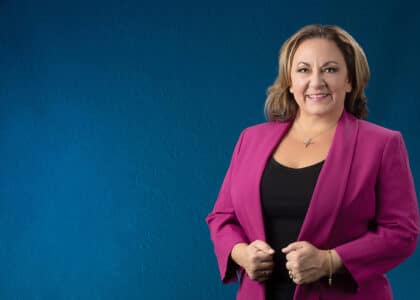On January 8, 2021, the Small Business Administration (SBA) announced that the Payroll Protection Program (PPP) will reopen this week. The application deadline is March 31, 2021 or when the funds are exhausted.
First Draw Loans
Qualifying businesses that did not receive a PPP loan in the initial rounds have another opportunity to apply. In addition, certain 501(c)(6) tax-exempt organizations now qualify for a PPP loan.
Borrowers who returned part or all of their initial PPP loan amount or did not accept the full amount of their initial PPP loan application now have the opportunity to re-apply or request an increase of their first round loan amount.
The January 6 interim Final Rules provide that a borrower’s lender may submit an electronic request with the SBA to increase a borrower’s PPP loan amount in certain cases where the rules of the program changed after the loan application was accepted. For example:
- Seasonal employers that received a loan before the alternative criteria issued on April 28, 2020 would be eligible for a higher loan amount under the alternative criteria.
- A partnership that did not include any amount for partner compensation may increase the loan amount by including these costs.
- Borrowers that did not factor tips paid by customers into their calculation of payroll costs may increase the loan amount by including these costs.
A borrower will not be permitted to apply for a loan increase simply because they made a mistake in calculating their maximum loan amount.
Second Draw Loans
The Consolidated Appropriations Act provides certain hard hit businesses with the opportunity to obtain a second round of PPP funding of up to $2 million. To be eligible for these “second draw” loans, a business must:
- Meet the necessity requirement;
- Employ not more than 300 employees (300 employees per physical location for restaurants, hotels and other entities in NAICS codes beginning with 72);
- Have used or will use the full amount of their first PPP loan for eligible expenses on or before the expected date that the second draw loan will be disbursed; and
- Show a 25% reduction in gross receipts for any calendar quarter of 2020, as compared to the same quarter in 2019.
These loans will have a five-year maturity, charge a 1% interest rate and not require collateral or personal guarantees. The application form is posted on the Treasury’s website.
Revenue Reduction Requirement
A borrower must demonstrate a 25% or greater reduction in gross receipts relative to the same quarter in 2019. If an applicant was not in business for all of 2019, there are special tests to determine if there was a 25% or greater reduction in gross receipts.
To ease the burden on borrowers, a borrower may use their 2020 and 2019 annual tax returns to substantiate their revenue reduction if they were in business for all of 2019 and can show a reduction in annual receipts of 25% or greater.
For loans over $150,000, this reduction in gross receipts must be supported with the loan application. Loans of $150,000 and less must support the reduction at forgiveness.
For purposes of calculating gross receipts:
- The borrower should use their current method of accounting to determine gross receipts (cash basis taxpayer will use cash and an accrual basis taxpayer will use accrual);
- Any forgiveness amount of a first draw PPP loan is excluded;
- Gross receipts include:
• Sales of products and services reduced by returns and allowances;
• Interest, dividends and other investment income;
• Rents, royalties and fees; and
• Commissions and other items. - Gross receipts do not include:
• Sales or similar taxes collected from customers and remitted to the taxing authority;
• Proceeds from transactions between the borrower and its domestic or foreign affiliates; or
• Amounts collected for another by a travel agent, real estate agent, advertising agent, conference management agent, freight forwarder or customs broker. - Gross receipts for tax exempt and non-profit organizations include:
• Gross amount received as contributions, gifts, grants and similar amounts;
• Gross amount received as dues or assessments from members or affiliated organizations;
• Gross sales or receipts from business activities;
• Gross amount received from the sale of assets without a reduction for cost or other basis and expenses of sale; and
• Gross amount received as investment income (interest, dividends, rents, royalties, etc.)
Loan Amount
The loan amount is calculated at 2.5 times the average monthly payroll amount as adjusted in the same manner as the first draw loans (3.5 times for restaurants, hotels and other entities in NAICS codes beginning with 72). The average monthly payroll can be determined by utilizing 2019 annual payroll, 2020 annual payroll or the most recent 12 months of payroll immediately prior to the application. If 2019 payroll was used on the borrower’s original application and they apply with the same bank, no additional support will be needed for the monthly payroll calculation if 2019 payroll is utilized again for the second draw loan.
Covered Period and Eligible Expenses
The covered period for the second draw loans will be any period from 8 to 24 weeks from disbursement of the loan at borrower’s discretion. The basic rules for which expenses qualify remain the same as for first draw rules as updated and discussed in our previous Client Alert.
Related Read: Significant Changes in the Paycheck Protection Program in Recent Legislation
The requirement that a minimum of 60% of the loan be used for qualified payroll expenses to receive complete forgiveness also remains.
Finally, reductions in eligible expenses for salary and full-time equivalent employee (FTE) counts are also similar to the first draw loan rules.
Employee Retention Credit
The new law made a major change to allow recipients of PPP loans to also take the Employee Retention Credit. The Employee Retention Credit can be a significant benefit for employers and is discussed in more detail in an ORBA Client Alert that was also issued today.
Related Read: New Stimulus Package Extends and Expands the Employee Retention Credit
An employer cannot use the same wages to receive the Employee Retention Credit as are used to obtain forgiveness for the PPP loan. Therefore, it is important to coordinate the filing of the forgiveness application with the credit to receive maximum benefit.
If you have questions or concerns regarding this Client Alert, please contact Frank Washelesky at [email protected] or your ORBA advisor.
Related Services
Related Industries
Dental
Health Care
Law Firms and Lawyers
Manufacturing and Distribution
Not-For-Profit
Real Estate
Restaurant





























































































































